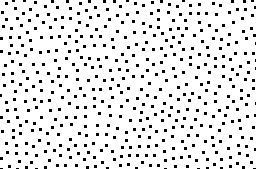Program committee statistics
Jump to the bottom for a short, visual explanation.
from Aaron Hertzmann
For those of you who’ve been on conference program committees, you know how sometimes you have a “good batch” of papers, or a “bad batch”? The CVPR 2018 program chairs sent out this nice little bit of statistical analysis to the ACs:
Folks,
1) As you work through your batches of papers, here’s some stuff to keep in mind. Some ACs will have weird batches of papers. This note to work a sum to give you some sense of how those batches are distributed.
2) I’ll use rough numbers in every case, and approximate like crazy. We have 3300 submissions. The usual accept rate is about 25% (often rather lower, but small details in the number don’t make much difference). This doesn’t mean that, in your pool, 25% of the papers should get in. Here’s why:
-
you get a random sample of (say) 30 from a population of 3300
-
assume each paper has a hidden 0 or 1 (reject/accept). The population mean is 0.25 (i.e. 25% get in).
-
the mean in your sample is a random variable, whose mean is 0.25, but whose variance is (0.25*0.75)/30
-
the usual stuff about normal distributions, binomial approx, etc. yields:
about 70 AC's have accept rates between .17 and .33 about 12 AC's have accept rates from .33 to .41 about 12 AC's have accept rates from .08 to .17 a few AC's have accept rates greater than .41 OR less than 0.08
3) This is rough stuff, because your sample isn’t random, etc. etc. Also, it isn’t a license to run wild. But it does mean that under reasonable rough models, some ACs are pretty much guaranteed rather strange pools. The effects won’t change much if you change the accept rate within reasonable ranges, too. If you’re fairly sure your pool is odd, there’s no need to be rattled.
4) We’ll keep track of statistics like this and keep ACs up to date during the meeting. We’ll also be watching to support ACs with odd pools so we and they are really sure the pool (rather than the AC) is odd
a simpler and less formal explanation
A truly random distribution would be like a white noise:
 i.e. image black dots are good papers and while regions are bad papers, and the 2D domains are the paper ids.
i.e. image black dots are good papers and while regions are bad papers, and the 2D domains are the paper ids.
As a committee member, you are assigned a random sub-window of the domain. If you shift the window around, you will get clumps of clusters or voids.
If you expect a “reasonable” distribution for all committee members, you are talking about a blue noise:

